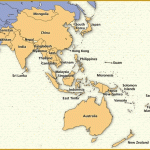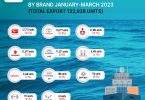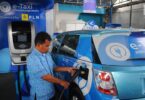 JAKARTA— The car industry in Indonesia has opportunity to increase the export markets. The opportunity comes in sight of the car market in Australia. First, the geographical position of Indonesia which is very close to Australia. Second, the Australian car market that is currently very dependent on imports from other countries since it no longer has its own car factory in the country.
JAKARTA— The car industry in Indonesia has opportunity to increase the export markets. The opportunity comes in sight of the car market in Australia. First, the geographical position of Indonesia which is very close to Australia. Second, the Australian car market that is currently very dependent on imports from other countries since it no longer has its own car factory in the country.
“There are 1.2 million cars in the Australian annual market, mostly supplied by car manufacturers from Thailand. This is because Thailand produces some of the most desirable types of cars in the Australian car market, ie sedans, sports utility vehicle (SUV), and or double cabin pickup. While automobile manufacturers in Indonesia at most produce cars versatile type (multipurpose vehicle, MPV),” said Secretary General of GAIKINDO Mr Kukuh Kumara.
Once car exports from Indonesia to Australia can be implemented, the Indonesian port city that sits closest to Australia is Port of Tanjung Intan Cilacap, a district town in the southern Island of Java (Central Java). With the improvement of infrastructure, Cilacap could become a larger port. So far the Cilacap harbour serves as a fuel terminal an a port for small boats of local fishermen.
Compared with any port in Thailand, Cilacap is obviously closer to reach Australia. With closer proximity to Australia, then on paper shipping cost of car exports from Indonesia to Australia could be more efficient. As a result, car exports from Indonesia could enter the market Australia at a more competitive price than the price of car exports from Thailand.
Almost all the world’s car principals have developed manufacturing facilities in Thailand, not least the automakers from Japan. They were particularly Mazda, Mitsubishi, Nissan, Toyota, which produce various types and models of cars— ranging from sedan pickup, double cabin, SUV, MPV.
However, car export from Indonesia to Australia is not simple. It needs infrastructure revamping, and it needs to cooperate with the government. In addition, there should also be changes in the business strategy of the principals who have car manufactures in Indonesia to shift their product types to match the car market in Australia. And in turn, it also needs government support in the form of a policy to encourage the Indonesian automotive industry through some kind of tax incentives.
Another challenge is the support of the Indonesian government policy on the use of fuel which is still struggling in the specification Euro2. Indonesia has been sticking with standard Euro2 to serve the public, especially with the subsidised fuel. In many countries, including Australia, the standard fuel engine technology for Euro2 is very obsolete and abandoned. They leap by applying a more stringent policy for the use of fuel Euro5 standards. They already have a roadmap for fuel must apply the Euro 6 standards. (*)








